Printer-Friendly PDF
Learning Through Places
Women’s History: Hill-Stead Museum
Hill-Stead Museum is in Farmington. Where’s Farmington?
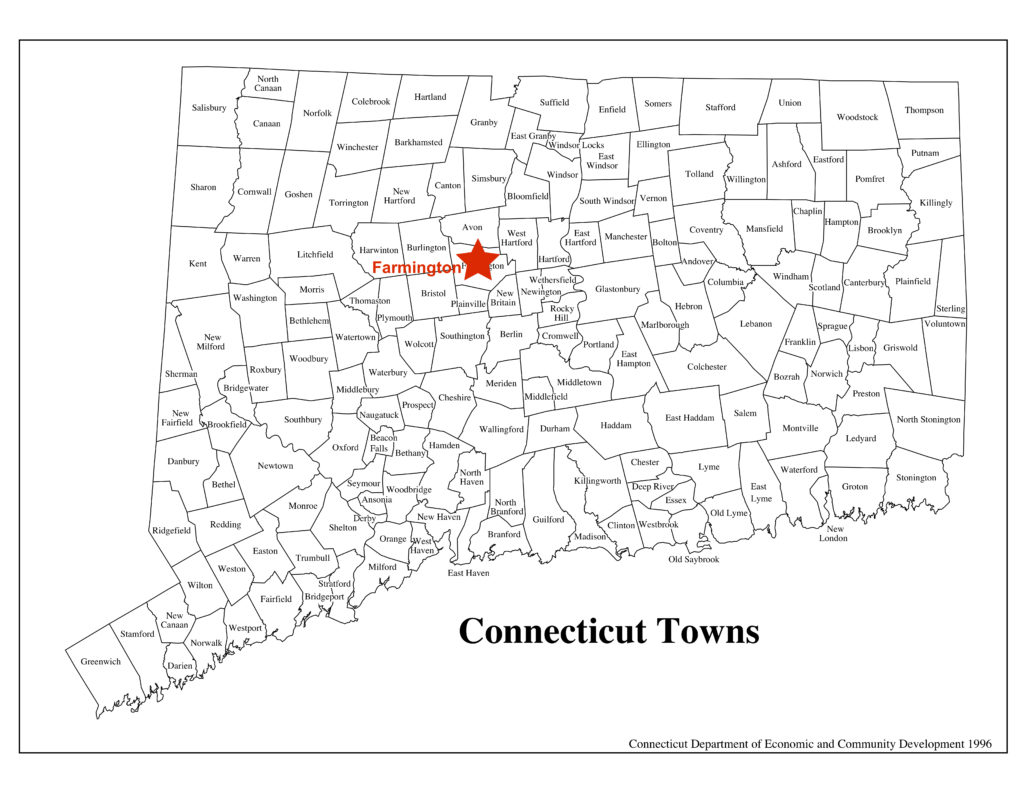
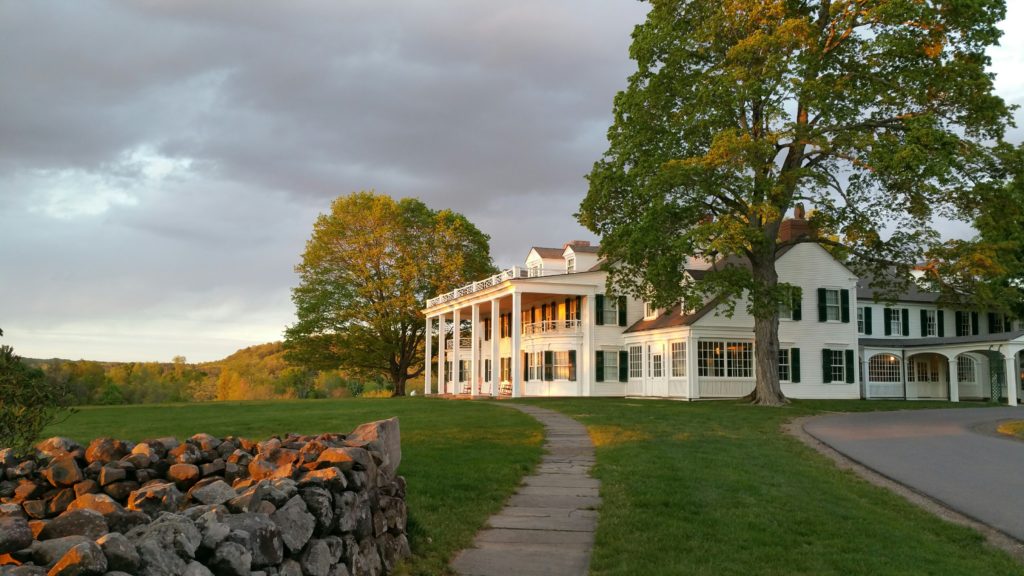
Hill-Stead Museum, Farmington, Connecticut. Photo: Caryn B. Davis, courtesy of Hill-Stead Museum
What do you see in the photograph?
What kind of place is this?
Is it a large or small building?
Does it look like it’s in the city or the country?
Does it look like one family or more than one family could live there?
What else do you see?
Let’s learn about this place!
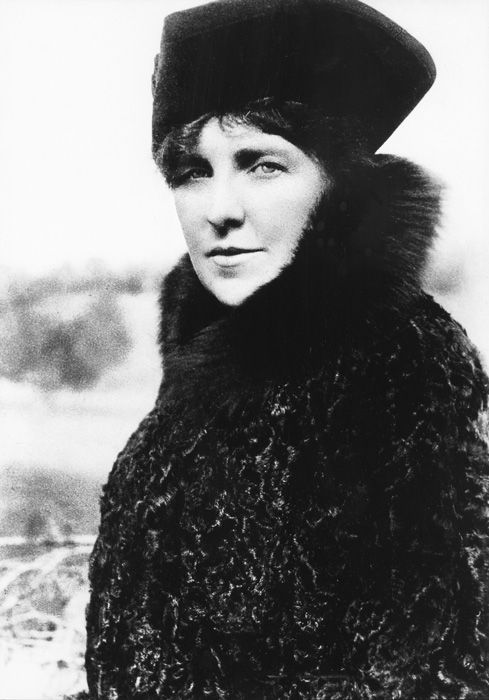
Theodate Pope. Photo: Hill-Stead Museum
Hill-Stead Museum was a family’s home. It was built in 1901. Theodate Pope designed it for her parents, Alfred and Ada Pope. Her father became wealthy as president of a factory in Cleveland, Ohio. She grew up in Cleveland. She came to Farmington to go to school. She fell in love with the beauty of Connecticut.
Theodate’s father retired. Theodate convinced her parents to move to Farmington. Her parents wanted a home where they could relax and entertain guests. Theodate found 250 acres of land near the village. It was enough land to have a small farm.
Alfred Pope trusted his daughter to design the new house. She had travelled across the world. She had studied buildings everywhere she went. She decided to make the new house look like an old New England farmstead. But it would be a very grand one! She wanted a wide front porch, wood siding, and many rooms. The front porch is like one at George Washington’s Mount Vernon. The house’s rooms had to display her father’s art collection.
Theodate was still learning to be an architect. She got help from the best architects in New York City. The company was called McKim, Mead and White. It was named for the three men who started the company. Theodate designed the whole house with their help.
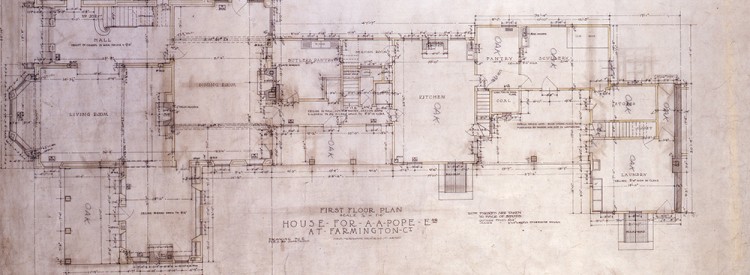
Part of the first-floor plans for Hill-Stead from the McKim, Mead & White papers. Photo: New York Historical Society
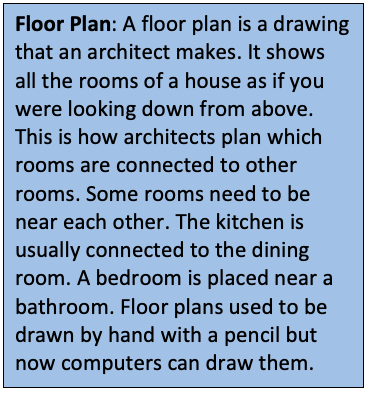 Theodate Becomes an Architect
Theodate Becomes an Architect
In the early 1900s very few women were architects. But Theodate’s father supported her ambition. Some people did not think that women should become architects. Most colleges did not allow women to study architecture. Theodate studied with professors and architects without going to college. She got her architect’s license in New York in 1916 and her Connecticut license in 1933.
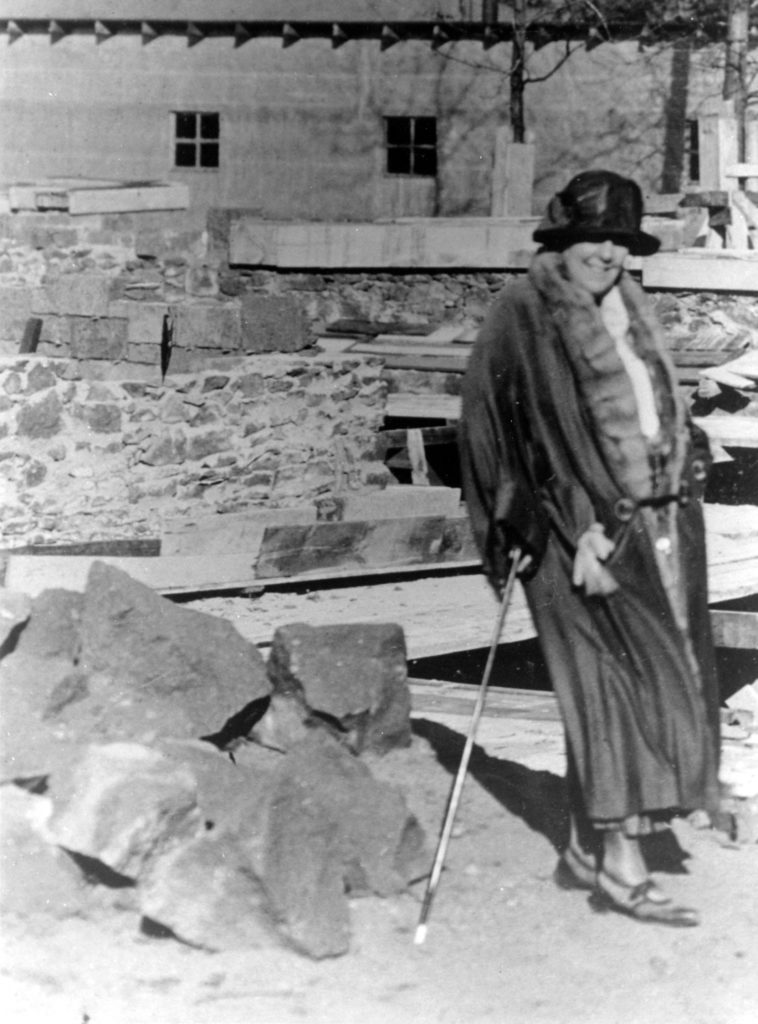
Theodate Pope Riddle at the construction site at Avon Old
Farms School in Avon, 1920s. Photo: Hill-Stead Museum
She designed many buildings that are now landmarks. She designed two large schools: Avon Old Farms School in Avon and Westover School in Middlebury. She also designed several homes. Theodate married John Riddle in 1916 when she was almost 50 years old.
The Pope House Becomes a Museum
The house that Theodate designed for her parents was called Hill-Stead. It means a homestead on a hill. It is considered a masterpiece. When she died, she wanted her house to become a museum. She wanted the public to enjoy the house, the gardens, and her father’s art collection.
Theodate died in 1946. Hill-Stead became Hill-Stead Museum. Thousands of people visit every year. They can appreciate Theodate’s creativity as an architect, and be inspired by her example to make the most of their talent!
Read about the discovery of a mastodon skeleton at Hill-Stead HERE.
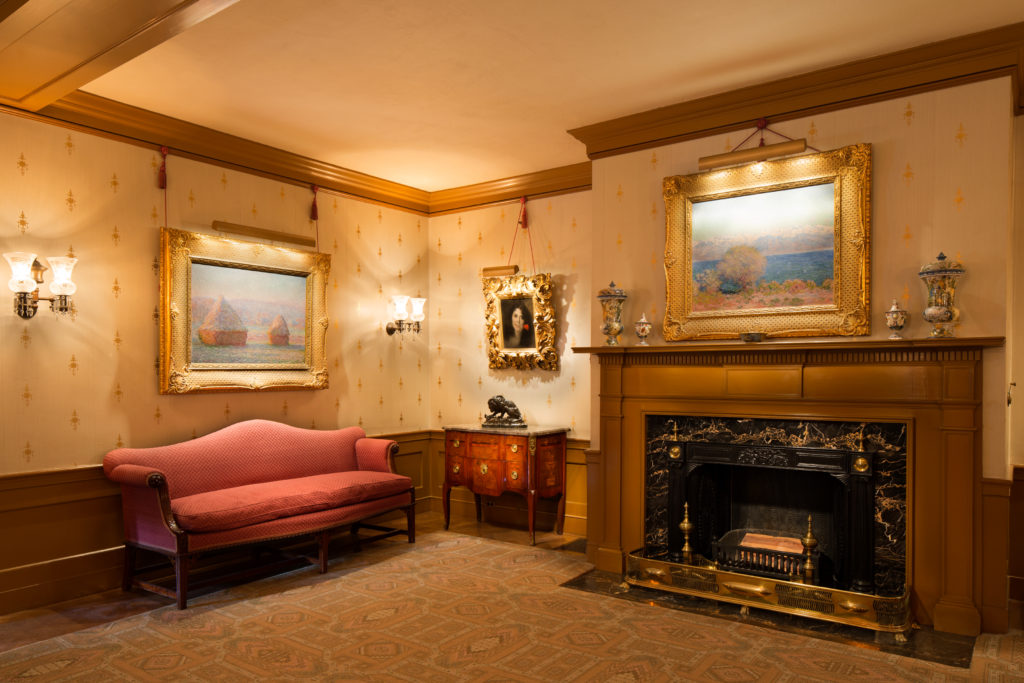
Hill-Stead’s drawing room is a big room used for entertaining guests. Theodate designed this room to showcase her father’s important French Impressionist paintings. Over the fireplace is “View of the Bay and Maritime Alps” by Claude Monet. This was the first Impressionist painting that Alfred Pope bought for his art collection. You can see the paintings in the house today. Photo: Hill-Stead Museum
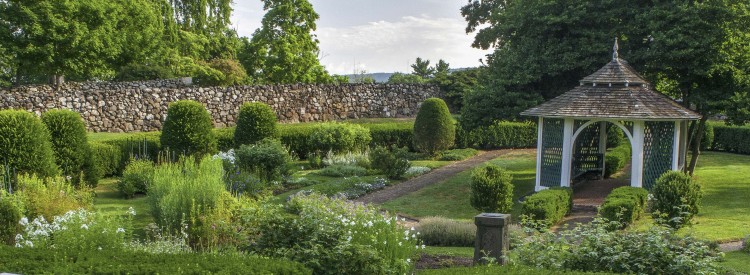
The Sunken Garden, a beautiful flower garden. Photo: Hill-Stead Museum
Classroom Activity or On Your Own
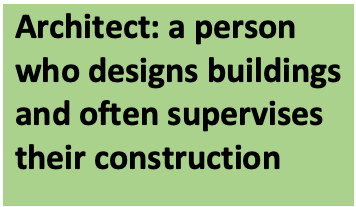 Design your perfect house. First, make a plan by answering some questions. Use your answers to draw a floor plan.
Design your perfect house. First, make a plan by answering some questions. Use your answers to draw a floor plan.
-
Where is your house located? Is it in a big city, a small town, or in the country? (This might determine if your house is large or small, on one floor or many floors.)
-
Who is going to live in your house? (This might also determine if your house is big or small.)
-
What rooms do they need? Kitchen? Living room? Bedrooms? What about a TV room, exercise room, laundry, dining room, playroom, library?
-
How many floors will your house have?
-
Does the yard have a pool or gardens?
-
What makes your house special?
Advocate for the next house museum. House museums aren’t always big mansions. The James Merrill House in Stonington is a third-floor apartment. James Merrill was an important poet. The Mary and Eliza Freeman Houses in Bridgeport may soon be an historic house museum! Mary and Eliza Freeman were successful black women in Derby and Bridgeport in the 1800s. Find out more about them at https://freemancenterbpt.com.
-
Choose a woman from the past or present that you admire. (If you need ideas, visit the Connecticut Women’s Hall of Fame at https://www.cwhf.org/inductees#.W_LrEnpKi7g.) If it’s someone you know, interview her. Ask her about the challenges that she overcame in her life and her accomplishments. Ask about her house. If it’s someone you don’t know, do as much research as you can online or at the library. Find out about where that person was born or an important place where she lived.
-
Make a poster or Powerpoint that argues for her home to become the next house museum. Include photos of the house or building, or draw your own. Include a floor plan that shows what visitors will see when they visit. If you don’t know what the inside looks like, imagine it. Living rooms, for example, often become exhibition spaces. Sometimes the kitchen isn’t open to visitors. What will visitors learn about in the museum?
Visit an historic house museum. Here’s a list:
Historic house museums in Connecticut
Explore a primary document. Look at this letter from Theodate Pope, architect. What does it tell you about her work as an architect?
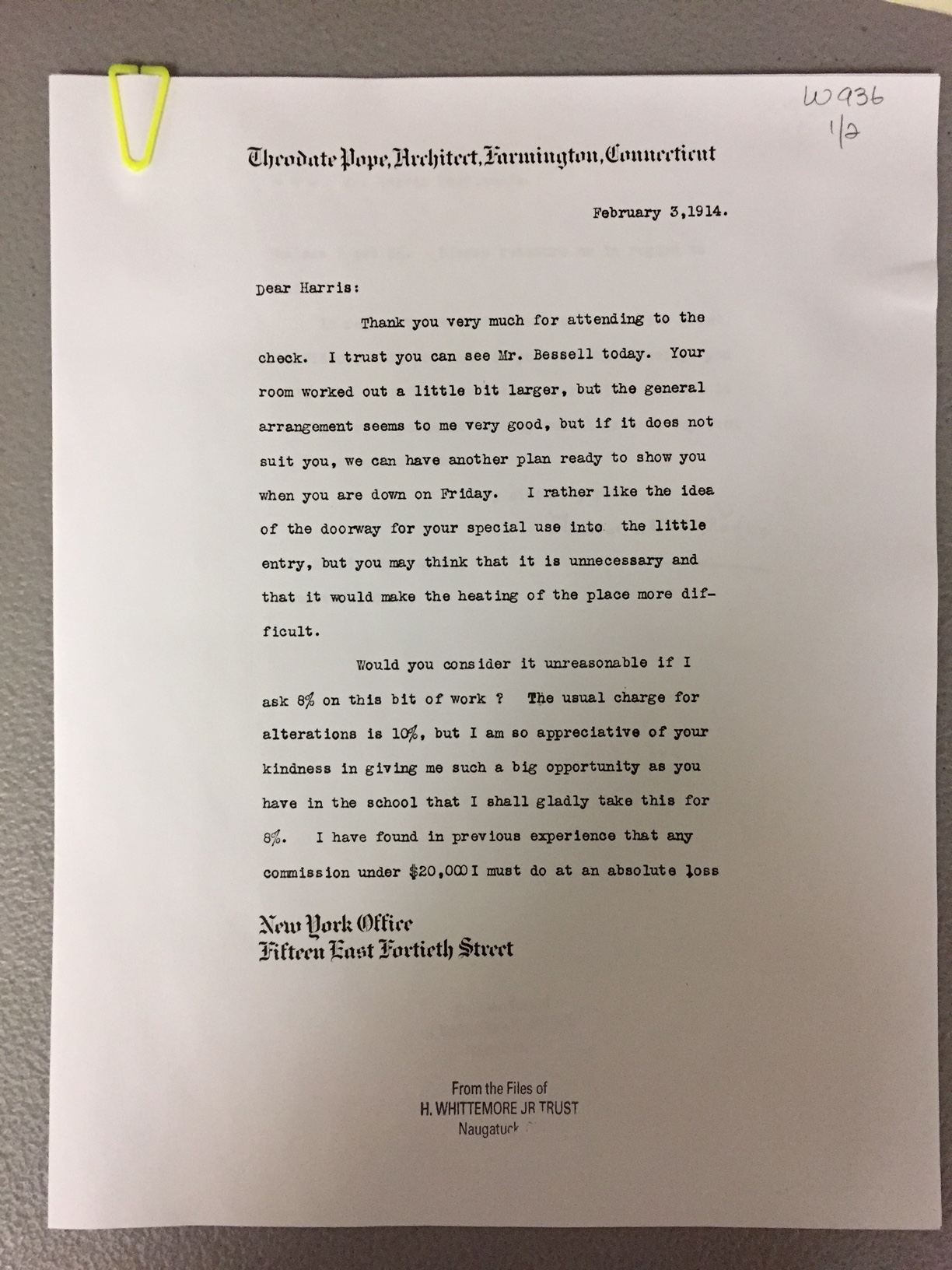
Primary document: Letter from Theodate Pope, architect, to her client. She talks about a floor plan for a change to a room. Harris Whitemore is her client. She talks about its size and the location of a door. She also talks about how much she will be paid for her work. Courtesy of Harris Whittemore Jr. Trust and Hill-Stead Museum
Find out about other pioneering women in the Connecticut Women’s Hall of Fame
https://www.cwhf.org/inductees#.W_LrEnpKi7g




 Theodate Becomes an Architect
Theodate Becomes an Architect


 Design your perfect house. First, make a plan by answering some questions. Use your answers to draw a floor plan.
Design your perfect house. First, make a plan by answering some questions. Use your answers to draw a floor plan.